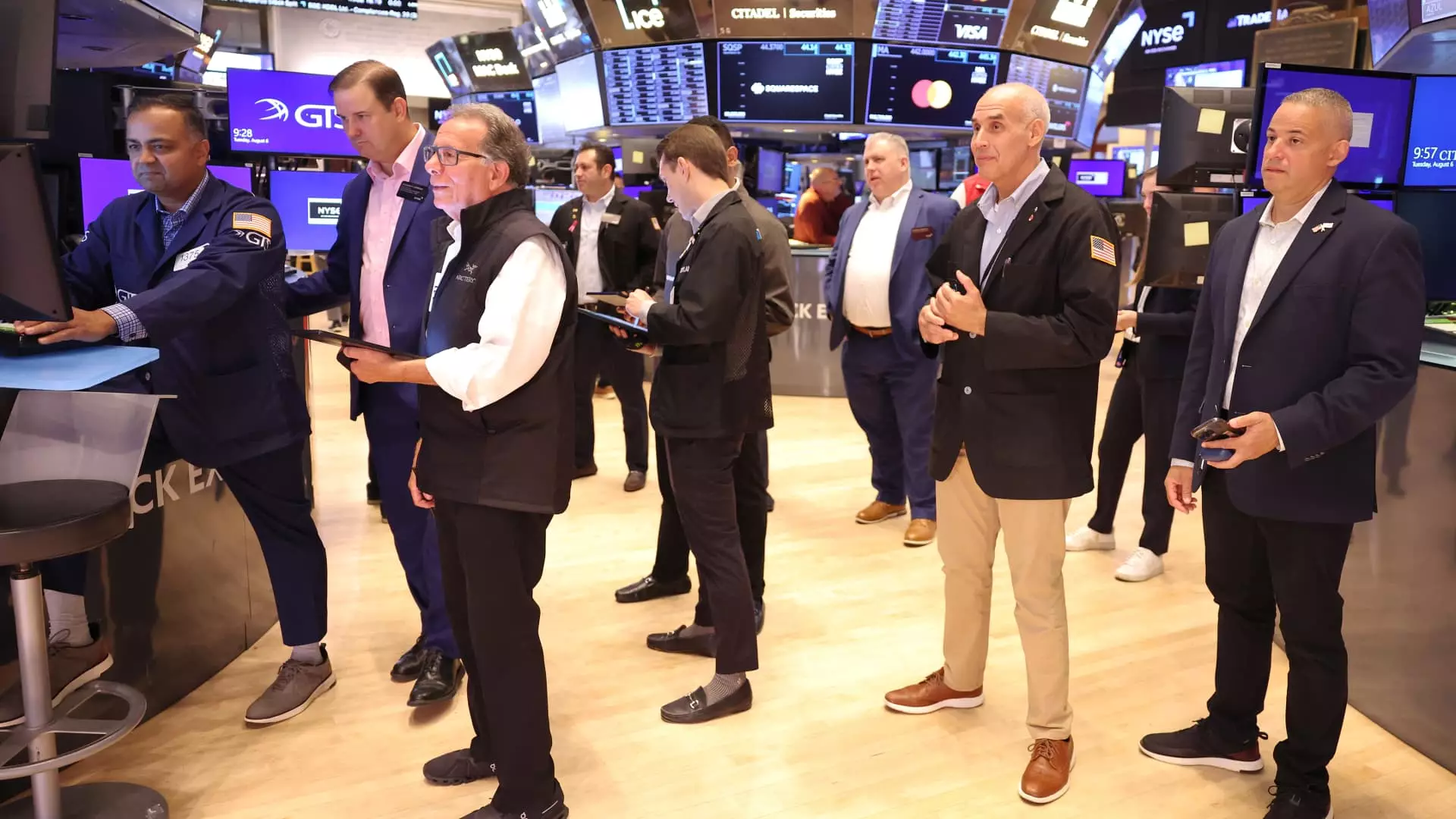The past week on Wall Street was filled with unexpected twists and turns, leaving investors feeling whipsawed by the volatile market conditions. The S & P 500 experienced extreme highs and lows, with the worst day since 2022 on Monday followed by the best day since 2022 on Thursday. This rollercoaster ride was further emphasized by the 10-year Treasury yield dropping below 3.7% before bouncing back to around 4%. Despite the chaos, the Cboe Volatility Index finished the week lower, indicating a sense of calm returning to the market.
Although the market seemed to have stabilized by the end of the week, investors are left wondering what comes next. With inflation under control globally and minimal evidence of a looming recession, the recent volatility is seen as a correction rather than the beginning of a bear market. Tim Hayes, chief global investment strategist at Ned Davis Research, highlighted the temporary weakness in the market but noted that it lacks the hallmarks of a sustained downturn.
Despite the unpredictable fluctuations in stock prices, there were underlying signs of strength in the market. More than two-thirds of S & P 500 stocks were still trading above their 200-day moving average, indicating stability for chart watchers. Additionally, the bond market remained relatively unscathed by interest rate volatility, with high-quality corporate debt holding steady. Investors’ skepticism towards equity market volatility seemed to buffer the impact on corporate debt.
The market turmoil was not limited to Wall Street, as Japan also experienced significant fluctuations in its stock market and currency exchange rates. Despite suffering a major crash, the Nikkei 225 Index managed to recover, finishing the week down less than 3%. This resilience in the face of adversity suggests a fundamental outlook that is less affected by short-term market fluctuations.
While the market may have stabilized for now, concerns linger about the sustainability of the current bull market. Analysts warn that key drivers of market growth may be running low on fuel, raising the possibility of further declines in stock prices. Issues such as the unwind of the carry trade with the yen could continue to impact market performance in the coming weeks.
As investors navigate the uncertain terrain of the market, looming factors such as the upcoming U.S. election and seasonally weak periods could further contribute to market volatility. Sharp selloffs and counter rallies throughout the week have left investors wary of future market movements. The need for a cautious approach in the face of fluctuating market conditions is emphasized by analysts and strategists alike.
The wild week of trading on Wall Street has provided valuable lessons for investors on the importance of resilience and adaptability in navigating unpredictable market conditions. While the market may have stabilized momentarily, the underlying uncertainties and potential risks ahead underscore the need for a cautious and informed investment strategy. By staying vigilant and keeping abreast of market developments, investors can better position themselves to weather future storms in the ever-changing landscape of finance.

Leave a Reply